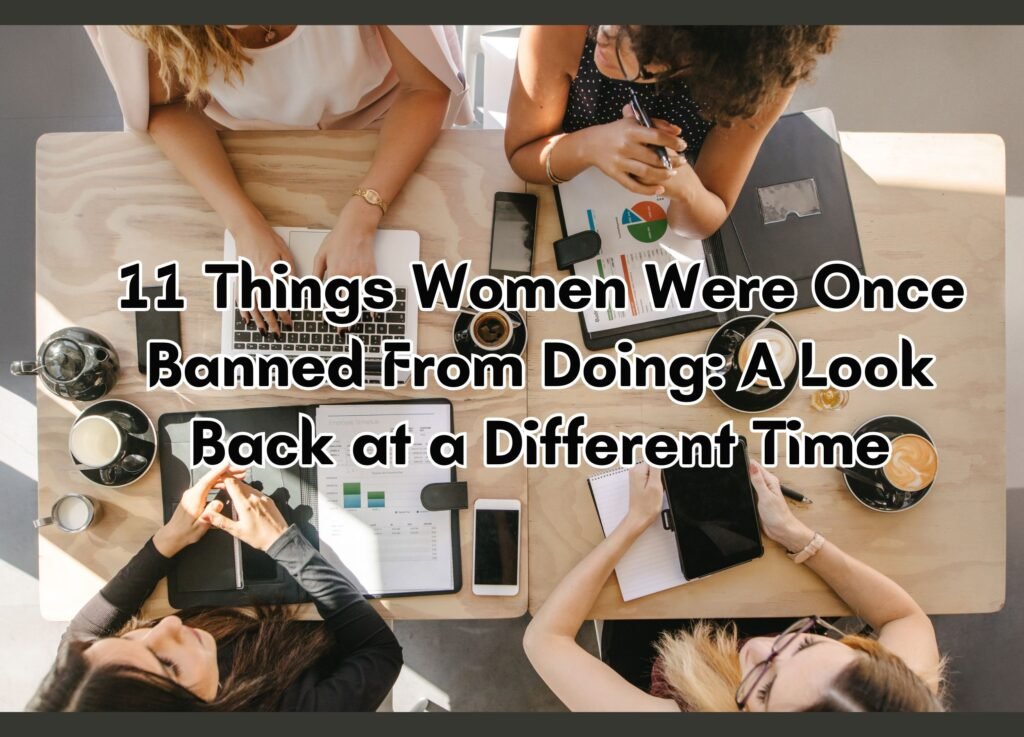The history of women’s rights is filled with struggles, triumphs, and some truly baffling restrictions. While society has come a long way in terms of gender equality, it’s essential to remember the hurdles women have had to overcome. Here are 11 things women were once banned from doing, along with some insights into why these bans existed and how they changed.

1. Voting:
For a long time, women were excluded from the democratic process. The suffrage movement fought hard to change this, culminating in the 19th Amendment in the United States and similar legislation worldwide.
2. Owning Property:
In many parts of the world, women couldn’t own property or had limited rights to manage it. This began to change in the late 19th and early 20th centuries.
3. Attending Universities:
Higher education was considered a male domain until the late 19th century. Women fought for their right to learn, leading to coeducational institutions and women-only colleges.
4. Working Certain Jobs:
Many professions, including law, medicine, and engineering, were off-limits to women. Title IX and other anti-discrimination laws have helped level the playing field.
5. Serving in the Military:
Women were not allowed to serve in combat roles and had limited military involvement. This has changed significantly, with women now serving in various capacities, including combat.
6. Getting a Credit Card:
Until the 1970s, women in the United States often needed a male co-signer to obtain a credit card. The Equal Credit Opportunity Act changed this.
7. Serving on a Jury:
Women were often excluded from jury duty, based on the belief that they were too emotional or biased. This began to change in the mid-20th century.
8. Using Birth Control:
Access to contraceptives was restricted for many years. Landmark cases like Griswold v. Connecticut paved the way for women’s reproductive rights.
9. Participating in Marathons:
Women were thought to be physically incapable of long-distance running. Kathrine Switzer broke this barrier by running the Boston Marathon in 1967.
10. Becoming an Astronaut:
Space travel was a male-only endeavor until Sally Ride became the first American woman in space in 1983.
11. Opening a Bank Account:
In some countries, women needed their husband’s permission to open a bank account. Changes in law and policy have made it possible for women to manage their finances independently.
Why These Bans Existed:
Many of these restrictions were rooted in societal norms and misconceptions about women’s capabilities and roles. They were often justified using pseudo-science, religious beliefs, or traditional values.
How Things Changed:
Activism, education, and legislation have been the driving forces behind these changes. Women and their allies fought tirelessly to challenge these norms, leading to a more equitable society.
In conclusion, while it’s shocking to think that women were once banned from these activities, it’s also a testament to the resilience and strength of those who fought for change. The struggle for gender equality continues, but looking back at these once-forbidden activities serves as a powerful reminder of how far we’ve come.
As an Amazon Associate we earn from qualifying purchases through some links in our articles.




